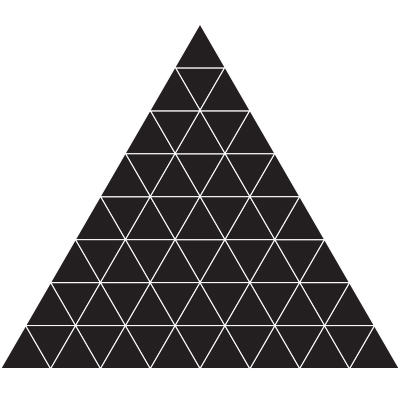Dancing Shapes
A dance club has set up a social mixer on a “Lucky for Some!” singles night that is designed to overcome shyness and allow people to find someone interesting. On the dance floor they have marked a giant triangle that has been divided into 64 internal triangular cells as shown in the figure. At the start of the dance, 64 ticket holders are each randomly assigned a cell. Then the emcee plays a popular song whose lyrics are 13 lines long. While a line is being sung, participants have to dance in the cell that they find themselves in. At the end of each line, a drumbeat signals that each dancer must move across one of the lines bordering the cell into an adjacent cell. At the end of the song, the lucky dancers whose originally assigned cells are now empty can choose any partner, and the couple is given drinks on the house. (Thirteen, it appears, can be lucky for some!)
 What is the minimum number of winners -- the dancers for whom the club will have to buy drinks -- if the dancers follow the instructions correctly?
What is the minimum number of winners -- the dancers for whom the club will have to buy drinks -- if the dancers follow the instructions correctly?
Resource: Quanta Magazine
The answer is 8.
This section requires Javascript.
You are seeing this because something didn't load right. We suggest you, (a) try
refreshing the page, (b) enabling javascript if it is disabled on your browser and,
finally, (c)
loading the
non-javascript version of this page
. We're sorry about the hassle.
On the other hand, 8 can be achieved as Mark Hennings' comment below. Since each of the dancers whose original cells were empty could possibly choose another from this group to have drinks with, the minimum number of winners is 8 .